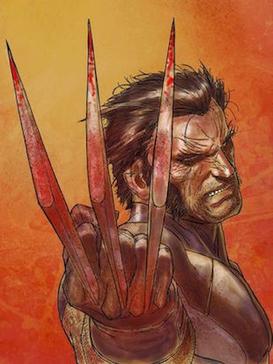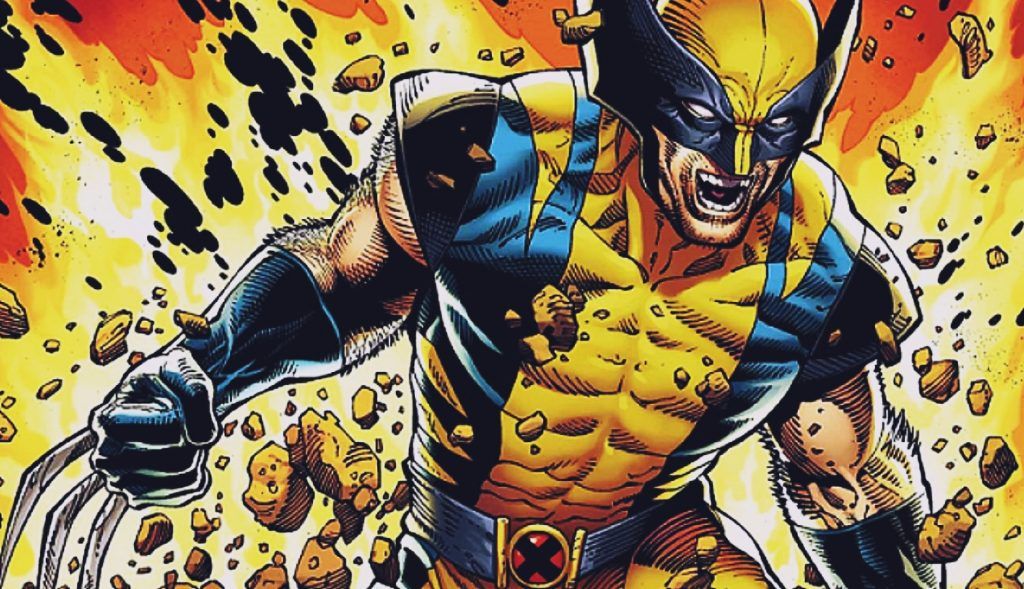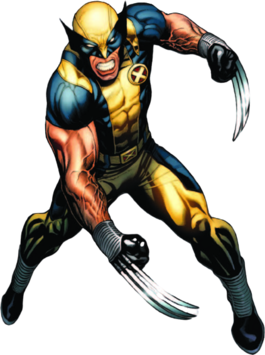The Multifaceted Hero: Exploring Wolverine's Powers, Origins, and Evolution
94
Introduction
Wolverine, also known by his birth name James Howlett and aliases Logan and Weapon X, is a superhero featured in American comic books published by Marvel Comics, often associated with the X-Men. As a mutant, Wolverine possesses heightened senses, enhanced physical abilities, a potent regenerative healing factor, an adamantium-reinforced skeleton, and three retractable claws on each hand. Beyond his involvement with the X-Men, Wolverine has been part of X-Force, Alpha Flight, the Fantastic Four, and the Avengers. His character is multifaceted, embodying a gruff loner prone to animalistic "berserker rages" alongside remarkable intelligence, linguistic skills, strategic prowess, and martial arts expertise due to his extended lifespan and diverse experiences. Wolverine has been a prominent figure in comic books, films, and video games.

Making his debut in the Bronze Age of Comic Books, Wolverine first appeared in the final panel of The Incredible Hulk #180 and had a more substantial role in #181 (November 1974). Created by Marvel editor-in-chief Roy Thomas, writer Len Wein, and Marvel art director John Romita Sr., Wolverine's costume was designed by Romita and first drawn for publication by Herb Trimpe. His character's development was influenced by writer Chris Claremont, artist Dave Cockrum, and artist-writer John Byrne. A pivotal moment in Wolverine's history occurred in a four-part limited series in 1982, written by Claremont and illustrated by Frank Miller, introducing the iconic catchphrase, "I'm the best there is at what I do, but what I do best isn't very nice." The 1991 Weapon X storyline revealed the traumatic process of adamantium grafting to Wolverine's skeleton, resulting in post-traumatic amnesia. Reflecting the tough antiheroes that emerged in American popular culture after the Vietnam War, Wolverine's readiness to employ deadly force and his brooding loner demeanor became defining characteristics for comic book antiheroes by the late 1980s. This contributed to Wolverine's popularity within the X-Men franchise, leading to the inception of his solo comic book series in 1988. Wolverine has been featured in various X-Men adaptations, including animated television series, video games, and films. Hugh Jackman portrayed the character in ten installments of the X-Men film series produced by 20th Century Fox from 2000 to 2018. He is set to reprise the role in the Marvel Cinematic Universe (MCU) film Deadpool 3 (2024). Additionally, Troye Sivan portrayed a young version of Logan in the 2009 film X-Men Origins: Wolverine.


Wolverine's Evolving Origins
First Intended Origin:
Contrary to suggestions that co-creator Len Wein envisioned Wolverine as a mutated wolverine cub transformed into a humanoid form by the Marvel geneticist High Evolutionary, Wein denies this claim. Originally, Wein conceived Wolverine with claws extending from the backs of his gloves, not as a mutated wolverine. Any association with the High Evolutionary creating a humanoid Wolverine came about after Wein's involvement with the character. Chris Claremont, Dave Cockrum, and John Byrne, who followed Wein, played roles in shaping Wolverine's character and backstory. Despite early plans for retractable claws as part of gloves made of adamantium, Claremont eventually revealed the claws as an integrated part of Wolverine's anatomy in X-Men #98 (April 1976). Writer Jeph Loeb later utilized a similar origin, suggesting feral mutants as an evolved life form. *Second Intended Origin:* John Byrne, a subsequent artist on the X-Men series, learned that Dave Cockrum had already drawn Wolverine unmasked in X-Men #98. Byrne repurposed the drawing for Sabretooth's face, an enemy of Iron Fist. Byrne and Claremont then developed the idea of Sabretooth being Wolverine's father, establishing Wolverine's age around 60 and his service in World War II after escaping from Sabretooth.
Commercial Success:
Following Byrne's departure, Wolverine maintained prominence in the X-Men series, which later became Uncanny X-Men. His popularity led to a solo series in 1982 by Claremont and Frank Miller, marking a turning point in Wolverine's significance within Marvel. Influenced by Clint Eastwood's film roles, Wolverine's appearance and characterization evolved. This popularity culminated in a 189-issue solo series launched in 1988, written by Claremont and later taken over by Larry Hama. Wolverine's past and the adamantium grafting event were explored in the pivotal "Weapon X" storyline by Barry Windsor-Smith. *1990s and Beyond:* Wolverine continued to be a prominent character in X-Men vol. 2 during the 1990s. The revelation of his bone claws in X-Men (Vol 2) #25 added depth to his character. Sales for X-Men comics saw a decline at the turn of the century, prompting Grant Morrison to revitalize the characters, including Wolverine, through New X-Men. Wolverine featured in the Astonishing X-Men series by Joss Whedon. The six-issue limited series "Origin" and the spin-off series "Wolverine: Origins" delved into Wolverine's past. Mark Millar's "Old Man Logan" story arc in 2008 and Wolverine's consistent presence in various Avengers series showcased the enduring popularity of the character. In the early chapters of Wolverine's life, he entered the world as James Howlett in the late 19th century in northern Alberta, Canada, close to Cold Lake. Despite being believed to be the legitimate child of affluent farmers John and Elizabeth Howlett, Wolverine's true lineage traces back to Thomas Logan, the Howletts' groundskeeper. Thomas's expulsion from the Howletts' estate, driven by an incident involving his other son, Dog, led to a tragic turn of events. Seeking revenge, James, in a display of his emerging mutant abilities, used bone claws to fatally strike Thomas. He then fled alongside his childhood companion, Rose, and matured in the Yukon mining colony, adopting the name "Logan." The accidental demise of Rose at Logan's hands prompted him to retreat to the wilderness, where he lived among wolves until his capture and inclusion in a circus. Rescued by Saul Creed, Logan's subsequent betrayal by Saul and Clara Creed led to a confrontation with Nathaniel Essex, resulting in Creed's demise. Returning to civilization, Logan resided with the Blackfoot people, entering the Canadian military during World War I after the loss of his Blackfoot lover, Silver Fox, at the hands of Victor Creed, now known as Sabretooth.Amidst World War II, Logan collaborated with Captain America, serving with the 1st Canadian Parachute Battalion during D-Day and later joining the CIA before becoming part of Team X, a covert operations unit. Between WWII and his involvement with Team X, Logan spent time in Madripoor before settling in Japan, where he wed Itsu. Tragedy struck as Logan's absence allowed Romulus to send the Winter Soldier to kill the pregnant Itsu and abduct the unborn child, who would later be known as Daken. Unaware of his son's survival, Logan, now a victim of false memory implants as a Team X member, eventually broke free from mental control and joined the Canadian Defense Ministry. However, his kidnapping by the Weapon X program subjected him to captivity and experimentation until his escape. The adamantium fusion to his bones occurred during this period. James and Heather Hudson played pivotal roles in helping him reclaim his humanity after escaping, leading to Logan's subsequent role as an intelligence operative for the Canadian government's Department H.


https://www.youtube.com/watch?v=-sqio1tiPGk&ab_channel=JoBloSuperheroes






































